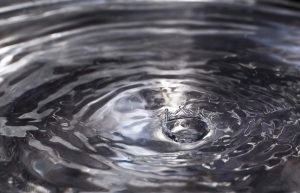 While there are many water treatment systems on the market, reverse osmosis is often overlooked. Yet, this type of system is incredibly powerful and in recent years, has seen a surge in popularity. RO systems are highly efficient to remove contaminants, but they also produce wastewater, up to four cups for each cup of filtered water. So, here we’ll delve into this type of system to help you decide if it is a good choice for you.
While there are many water treatment systems on the market, reverse osmosis is often overlooked. Yet, this type of system is incredibly powerful and in recent years, has seen a surge in popularity. RO systems are highly efficient to remove contaminants, but they also produce wastewater, up to four cups for each cup of filtered water. So, here we’ll delve into this type of system to help you decide if it is a good choice for you.
Why Does Reverse Osmosis Produce Wastewater?
Reverse osmosis systems require the water to be pushed through the semi permeable membrane to remove 99% of contaminants. The membrane can prevent harmful contaminants such as bacteria, heavy metals, viruses, sediment and many others from passing through. While the water that goes through the membrane is free of contaminants, the water that remains is considered “waste water.” It contains all of the removed impurities and needs to be flushed out of the system. This means that RO uses more feed water compared to other systems, but it also produces less filtered water.
How Much Wastewater is Produced?
The amount of wastewater produced by an RO system will depend on the system’s water pressure. Traditional RO systems use approximately four gallons of wastewater for each gallon of filtered water that it produces. This is due to the water tank creating a pressure of 7 to 8 psi, when the ideal pressure is 35 to 40 psi.
Fortunately, with the emerging advanced technology, RO filtration processes have seen efficiency improvements. Modern systems do not have a tank and instead, have a powerful internal pump, which increases the water pressure. This means compared to the 75 gallons of pure water provided each day with a traditional RO system, you could get up to 800 gallons from an advanced tankless model.
This creates a waste ratio of 1:1 or 2:1, which translates to one or two gallons of wastewater produced per one gallon of filtered water respectively.
Reducing the Wastewater:
Fortunately, even if you have an older RO system, there are some ways that you can improve the efficiency and reduce the amount of wastewater produced. These include:
Maintaining adequate water pressure levels: RO systems will produce more wastewater when there is a lower water pressure. So, if you can ensure that your system is running closer to the ideal 35 to 40 psi, you’ll improve efficiency.
Maintain your water filter: RO filters require regular checks to ensure that they are properly maintained. You can also protect the filter with pre-treatment to eliminate potentially damaging contaminants before they reach the RO membrane.
Not Wasting Wastewater:
While the wastewater from a RO system is not suitable for cooking or drinking, there are some ways that you can use this water to avoid waste. For example, you could wash your car with the water. Washing a car takes up to 75 liters of water, so the waste water from an RO system could meet this requirement. Alternatively, you could use the water for mopping your floors, flushing toilets or other household chores.
If you are considering an RO water treatment system, be sure to speak to a professional water treatment specialist. Your technician will be able to answer any of your questions and guide you through the available options.
